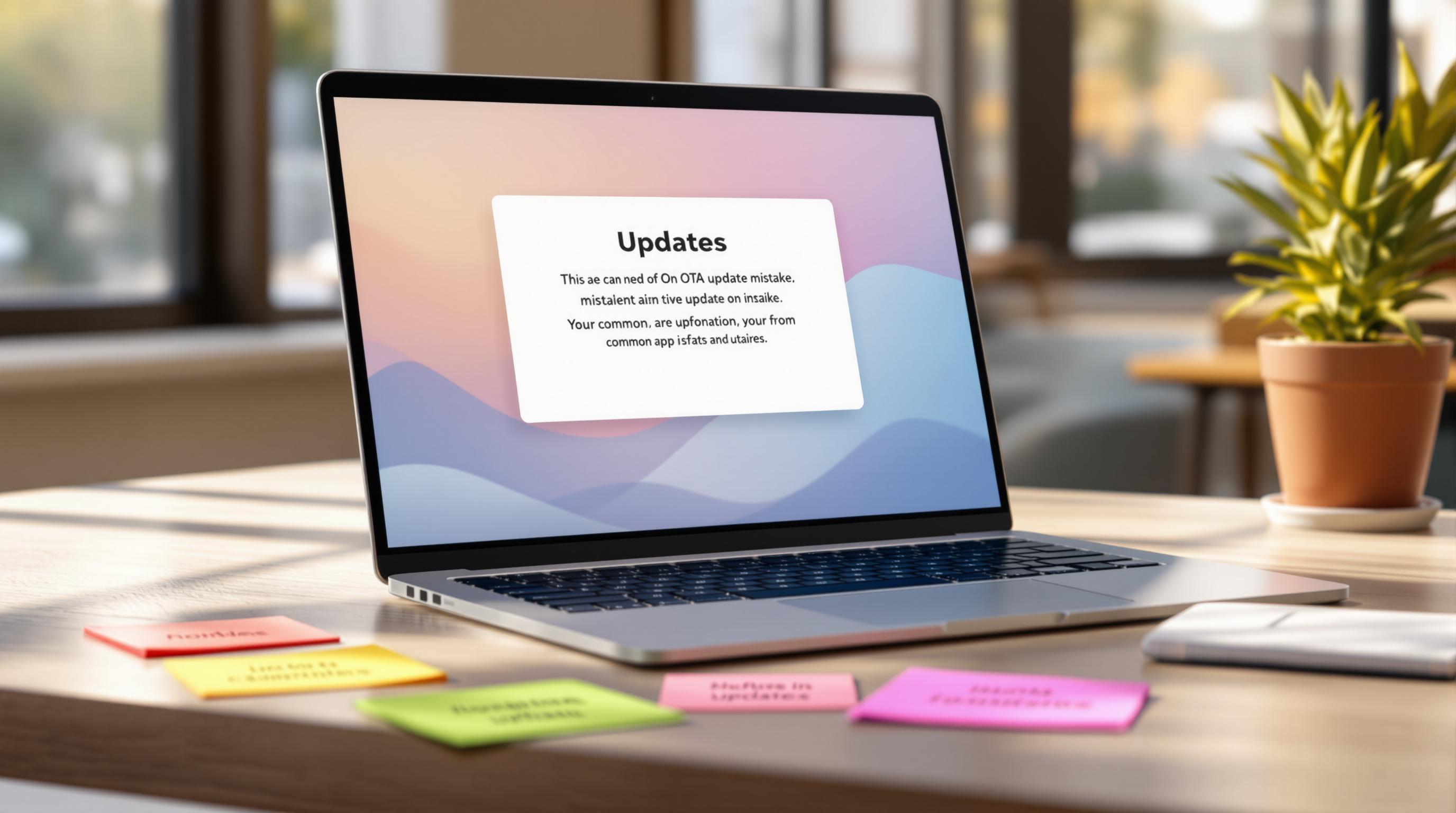Want to enhance your Capacitor app with powerful features like live updates, analytics, or secure functionality? Adding third-party plugins is the way to go. Capacitor makes it simple to integrate plugins, expanding your app’s capabilities without deep native coding.
Here’s what you’ll learn:
-
Tools you need: Node.js, npm, Capacitor CLI, Xcode, Android Studio, and more.
-
Skills checklist: JavaScript/TypeScript, mobile debugging, and Capacitor API knowledge.
-
Finding plugins: Use npm, Capacitor Community Hub, or GitHub to discover reliable options.
-
Installing plugins: Install via npm and sync with
npx cap sync. -
Configuration: Update platform-specific files like
Info.plist(iOS) orAndroidManifest.xml(Android). -
Debugging tips: Use tools like
npx cap doctorand verbose logging to fix issues.
Pro Tip: Tools like Capgo make managing updates and plugin rollouts seamless, with features like encrypted updates and real-time analytics.
Ready to supercharge your app? Dive in to learn the step-by-step process for integrating and managing plugins in your Capacitor projects.
Capacitor + Nx = Cross Platform Plugin Development

Before You Start
Before diving into plugin integration, make sure your setup and skills are ready to go.
Tools You’ll Need
Here’s a quick checklist of the tools required:
-
Node.js: Version 16.0 or higher
-
npm: Version 8.0 or later
-
Capacitor CLI: Latest stable release
-
Git: For version control
-
Xcode: Version 14 or newer (Mac only)
-
Android Studio: Latest version with SDK tools
Once you’ve got these tools installed, take a moment to assess your skill set.
Skills Checklist
Here’s what you should be comfortable with:
Core Technical Skills:
-
Intermediate knowledge of JavaScript/TypeScript
-
Understanding of mobile app architecture basics
-
Familiarity with async/await and Promise patterns
-
Experience with npm for managing packages
Platform-Specific Knowledge:
-
Basic iOS development (for iOS plugins)
-
Basic Android development (for Android plugins)
Framework Familiarity:
-
Working knowledge of the Capacitor API and a web framework like React, Vue, or Angular
-
Experience with mobile-first responsive design
If any of these feel unfamiliar, consider brushing up before moving forward.
Finding the Right Plugins
Where to Find Plugins
To discover Capacitor plugins, start with the npm registry. Search for keywords like “capacitor-plugin” or “@capacitor/”. The official Capacitor team maintains core plugins under @capacitor/, covering features like camera, geolocation, and storage.
Here are additional sources you can explore:
| Platform | Description | Benefits |
|---|---|---|
| Capacitor Community Hub | Community-maintained plugins | Verified compatibility, regular updates |
| GitHub Awesome Lists | Curated plugin collections | Well-organized and categorized |
| npm Verified Publishers | Plugins from trusted developers | Increased reliability |
Once you’ve compiled a list of potential plugins, the next step is to evaluate their quality.
How to Check Plugin Quality
After identifying plugins that seem promising, assess their quality using these key factors:
Documentation Quality
- Look for clear installation instructions, thorough API references, platform-specific guides, and working code examples.
Maintenance Status
- Check the plugin’s GitHub repository for recent activity, quick responses to issues, regular updates, and compatibility with the latest Capacitor versions.
Community Engagement
- Analyze metrics like weekly npm downloads, GitHub stars, forks, issue resolution rates, and maintainer involvement.
A well-maintained plugin should show active development. For example, look for:
-
Frequent releases (ideally at least quarterly)
-
Proper semantic versioning
-
A detailed changelog
-
TypeScript support with type definitions
Compatibility Check
-
Test the plugin in your development environment.
-
Ensure it meets platform-specific requirements and doesn’t conflict with other plugins.
-
Verify it supports all your target platforms (iOS/Android).
-
Confirm it aligns with your app’s production standards for reliability.
For apps in production, prioritize plugins with a proven track record or those offering commercial support. This ensures dependable assistance if any issues arise.
Plugin Installation Steps
After ensuring your plugins meet quality standards, follow these steps to install and sync them.
npm Installation Commands
Use npm to install plugins:
npm install plugin-nameFor official Capacitor plugins:
npm install @capacitor/plugin-nameTo install multiple plugins at once:
npm install @capacitor/camera @capacitor/geolocation @capacitor/storageFor Capgo’s live update feature [1]:
npx @capgo/cli initOnce installed, sync the plugins with your native platforms.
Running Capacitor Sync
Run the following command to integrate the native components:
npx cap syncHere’s what happens during syncing:
| Task | Description | Impact |
|---|---|---|
| Copy Web Assets | Transfers web assets to native platforms | Updates web content |
| Update Native Configs | Adjusts native configuration files | Ensures compatibility |
| Install Dependencies | Adds required native dependencies | Enables plugin functionality |
| Platform-specific Setup | Handles platform-specific configurations | Prepares for iOS/Android |
To sync a specific platform, use:
npx cap sync iosnpx cap sync androidKey Tips:
-
Ensure plugins are compatible with your Capacitor version.
-
Review terminal output for warnings or setup instructions.
-
Keep your development tools updated.
If you encounter version conflicts, use npx cap sync --force to perform a clean sync.
Once syncing is complete, configure the plugins for each platform as needed.
Setting Up and Using Plugins
Platform-Specific Setup
To configure plugins, update the capacitor.config.json file with platform-specific settings:
{ "plugins": { "Camera": { "ios": { "usageDescription": "Your app needs camera access to take photos" }, "android": { "allowBackgroundUsage": false } } }}For iOS, include necessary permissions in the Info.plist file, such as camera, photo library, or location access.
For Android, make sure to add the required permissions in the AndroidManifest.xml file:
<uses-permission android:name="android.permission.CAMERA" /><uses-feature android:name="android.hardware.camera" android:required="true" />Plugin Setup in Code
Start by importing the plugins into your application code:
import { Camera } from '@capacitor/camera';import { Geolocation } from '@capacitor/geolocation';For better organization, consider grouping multiple plugins into a service:
export class PluginService { async checkPermissions() { const cameraPermission = await Camera.checkPermissions(); const locationPermission = await Geolocation.checkPermissions(); return { cameraPermission, locationPermission }; }}Once imported and structured, you can start implementing plugin features and testing them across different platforms.
Working with Plugin Features
Leverage async/await to handle plugin features with proper error management:
async function captureImage() { try { const image = await Camera.getPhoto({ quality: 90, allowEditing: true, resultType: 'base64' }); return image; } catch (error) { console.error('Camera error:', error); throw error; }}Test plugin functionality at every stage of deployment to ensure reliability.
“We rolled out Capgo OTA updates in production for our user base of +5000. We’re seeing very smooth operation almost all our users are upto date within minutes of the OTA being deployed to @Capgo.” - colenso [1]
| Plugin Testing Phase | Best Practice | Impact |
|---|---|---|
| Development | Use channel system | Isolate testing environments |
| Beta Testing | Leverage error tracking | Identify platform-specific issues |
| Production | Enable automatic updates | 95% user update rate within 24 hours |
Capgo’s encrypted update system can simplify frequent plugin updates [1].
Key Tips for Implementation:
-
Test plugins thoroughly on all platforms.
-
Address platform-specific edge cases.
-
Use proper error boundaries to handle failures.
-
Monitor plugin performance with analytics tools.
Fixing Common Problems
Install and Sync Issues
If you’re encountering npm installation errors, they often stem from version mismatches or missing dependencies. Here’s how you can address them:
-
Clear the npm cache and update Node.js:
Terminal window npm cache clean --forcenpm install @capacitor/core@latestnpm install @capacitor/cli@latest -
If problems persist, use the following command to diagnose configuration issues:
Terminal window npx cap doctor
This command scans for common problems and provides suggestions for resolving them.
Plugin Conflicts
Plugin conflicts are usually caused by incompatible versions or overlapping functionality. Here’s how to handle them:
| Conflict Type | Suggested Solution |
|---|---|
| Version mismatch | Update Capacitor core and plugins to matching versions. |
| Duplicate plugins | Remove conflicting plugins and reinstall them one by one. |
| Platform-specific issues | Set up platform overrides in your project configuration. |
If multiple plugins require different Capacitor versions, check the compatibility settings in your package.json file:
{ "peerDependencies": { "@capacitor/core": ">=4.0.0 <5.0.0" }}Still stuck? Move on to debugging steps for a deeper analysis.
Debug Steps
To debug plugin issues, follow these steps:
-
Enable verbose logging in your Capacitor configuration file:
{"server": {"cleartext": true,"androidScheme": "http","allowNavigation": ["*"],"debug": true}} -
Use platform-specific debugging tools:
-
For iOS: Use the Xcode Console.
-
For Android: Check Logcat in Android Studio.
-
-
Log and track plugin errors in your code:
try {await Plugin.method();} catch (error) {console.error(`Plugin error: ${error.message}`);// Optionally, integrate with an error tracking service}
For ongoing problems, check the plugin’s GitHub repository for reported issues or troubleshooting tips. Many plugin authors include detailed instructions in their documentation.
Pro Tip: Use development tools specific to your platform to inspect network activity, permissions, and crash logs. These tools can save you time by helping you identify the root cause of the issue.
Using Capgo for Updates

Once you’ve addressed common integration issues, Capgo makes managing updates for your Capacitor apps a breeze.
About Capgo
Capgo simplifies live management of third-party plugins in Capacitor apps. With 23.5 million updates delivered across 750 apps [1], it’s a trusted tool for handling plugins. Its features include instant deployment, partial updates, end-to-end encryption, and channel-based distribution, all designed to keep plugin delivery smooth and efficient.
Plugin Management with Capgo
Here’s what Capgo brings to the table:
| Feature | What It Does | Key Metric |
|---|---|---|
| Background Updates | Installs updates silently, no user action needed | 95% of active users updated within 24 hours [1] |
| Version Control | Allows one-click rollbacks | 82% rollback success rate globally [1] |
| Analytics Dashboard | Tracks update performance in real time | Helps identify and resolve issues quickly |
Capgo integrates effortlessly into your Capacitor workflow, ensuring secure and continuous updates. It works with tools like GitHub Actions, GitLab CI, and Jenkins, automating plugin updates and deployments to save time and reduce manual effort.
For teams handling multiple plugins, the channel system supports beta testing before wider releases. Real-time analytics provide insights into update performance and error tracking. Capgo is compatible with Capacitor 6 and 7, supports custom API integrations, and offers self-hosted options for specialized needs.
Summary
Integrating third-party plugins involves a few essential steps: researching reliable options, installing them via npm, syncing with native components, and configuring them for each platform.
Here’s a breakdown of the integration process into key phases:
| Phase | Key Actions | Success Metrics |
|---|---|---|
| Pre-Integration | Research plugin compatibility and user reviews | Identifies potential challenges early |
| Installation | Install plugins using npm and run Capacitor sync | Ensures smooth integration across platforms |
| Configuration | Handle platform-specific setup requirements | Optimizes plugin performance |
| Maintenance | Use automated updates with Capgo | 95% of users updated within 24 hours[1] |
Capgo offers tools to streamline updates. Rodrigo Mantica highlights its importance:
“We practice agile development and @Capgo is mission-critical in delivering continuously to our users!”[1]
For enterprise applications, Capgo’s channel system enables staged rollouts effectively. With an 82% global update success rate[1] and advanced error tracking, Capgo ensures a dependable update process. NASA’s OSIRIS-REx team is a great example of how a strong update pipeline can make a difference[1].




